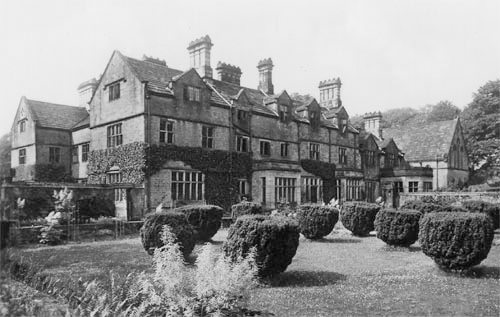Derwent Hall
Derbyshire
| Location | Derwent | ||
| Year demolished | 1944 | ||
| Reason | Demolished to make way for Ladybower Reservoir | ||
| See all images: | Gallery | ||
| << Back to the main list |
Built in 1672 for Henry Balguy of The Hagg (another seat nearby), Derwent Hall replaced an earlier house. However it was to end its life as a victim of the industrial growth of Sheffield, Derby, Nottingham and Leicester and their increased need for water.
 Built of local stone, Derwent Hall was an impressive 2-storey, gabled house built on an H-shaped plan with attic dormers in the long (9-bay) north and south ranges. The windows on the ground floor were a mullioned and transomed windows in traditional Jacobean style, whilst on the first floor were two-light transomed windows.
Built of local stone, Derwent Hall was an impressive 2-storey, gabled house built on an H-shaped plan with attic dormers in the long (9-bay) north and south ranges. The windows on the ground floor were a mullioned and transomed windows in traditional Jacobean style, whilst on the first floor were two-light transomed windows.
The house became a farmhouse from 1767 until c1817 when it was bought by one John Read before passing, by inheritance, to the powerful Newdigates of Kirk Hallam and then to the Dukes of Norfolk. It became a youth hostel, opened by the Prince of Wales, in 1931.
The end for the house came with the need for new reservoirs to support the fast growing cities in the Midlands. It was compulsorily purchased in 1939, used as a school from September 1940 until August 1941, and then demolished in 1944 before completion of the Ladybower reservoir in 1945. The site of the house is usually underwater but in periods of drought the streets of the 'lost' village of Derwent and the outlines of the houses and Derwent Hall sometimes appear again.